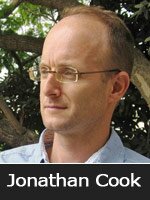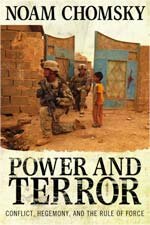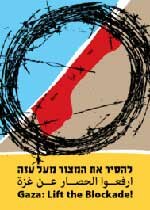
Susya, June 2012: Will Palestinian residents be expelled a third time? (Image: Rabbis for Human Rights)
By Amira Hass, Haaretz – 18 June 2012
www.haaretz.com/news/features/the-law-ass-or-donkey.premium-1.437023
Three High Court justices sit down to familiarize themselves with the facts: The residents continue to build without construction permits. And the three justices issue an interim order against any such construction within the two clusters that the petition relates to. The order was issued on June 7, the day after the petition and had been discussed.
Subject of the petition: Illegal outpost
Essence of the petition: Disregard of the laws of symmetry and the failure to implement the house-demolition orders issued regarding the structures of the said outpost. The subtext is clear: You ruled against Migron and the Ulpana neighborhood; why are you silent this time?
The justices: Asher Grunis, Hanan Melcer and Daphna Barak-Erez
The buildings: Neither low-rise apartment blocks like the ones in the Ulpana neighborhood nor single-family villas similar to housing in the West Bank settlement of Ofra (the vast majority of which is constructed on private land belonging to the villages of Silwad and Ein Yabrud, and therefore also lacks a detailed construction and development plan ), not even trailers hooked up to water and electricity like the ones in Migron and Givat Assaf. Only a cluster of hovels, tents and concrete rooms slapped together in a hurry.
Guess: The residents are Palestinians (only Palestinian “illegal outposts” remain unconnected to the electricity grid, phone and water lines ).
The land: Private Palestinian land, just like in Migron, Givat Assaf and Ofra, but unlike the Jewish outposts, this “outpost” is located on land owned by its inhabitants. No forged signatures or documents, no other acts of fraud perpetuated.
Name: Susya, southern slope of Mount Hebron
Some history: The adjacent Jewish West Bank settlement of Susya was erected in 1983.
1986: A confiscation order is issued against the lands of the Palestinian village Susya. The village is decreed an archaeological site (because of remnants of an ancient Jewish settlement ). And the Palestinian residents? Instead of treating them with respect and thanking them for preserving the location over the centuries, the IDF and Civil Administration expel them from their homes (caves located among ancient stone structures ), wells and fields.
And then? Susya’s Palestinian residents, members of the Nawaj’ah family, move onto the land they’ve been farming, into caves and tents.
July 2001: Under the guise of the second intifada, the IDF and Civil Administration expel the Nawaj’ah family for a second time. Tents are crushed, caves and wells sealed and wrecked, farmland destroyed, animals killed.
A small but surprising twist: On September 26, 2001, the High Court of Justice instructs the authorities to stop destroying the buildings at the height of a public campaign by the residents and left-wing groups, and the residents’ legal battle led by attorney Shlomo Lecker.
Despite the injunction, Jewish settlers and the army prevent the residents’ access to some 3,000 dunams (about 740 acres ) of their land.
The court orders an end to the demolition and expulsion, but does not instruct the Civil Administration to allow the Palestinians to build, forcing them to build without permits, for example, a school. As of May 2012, 18 demolition orders have been issued against hovels and buildings, including a school.
Another plot twist: Via the organization Rabbis for Human Rights, Susya residents appeal the blocked access to their private land and the fact that Jewish settlers are making a grab for it.
Another surprise twist: In October 2011, the military commanding officer declares a large part of their land as “closed to Israelis,” i.e., Jewish settlers, in order to stop the encroachment and land grab.
An attempt to fix the twist, February 2012: Regavim, a nonprofit association to protect the Jewish nation’s land, and the Jewish settlement of Susya petition the High Court to accelerate the pace of the Palestinian Susya demolition orders and to stop construction. In other words: a recipe for a third expulsion.
In her response, Attorney Avital Sharon of Rabbis for Human Rights points to the petition’s lack of good faith, and why it should be rejected outright. For example, she points to unauthorized construction in Jewish Susya and to the fact that the director general of Regavim himself lives in an unauthorized outpost.
Sharon also also gives reasons for the case in question: the earliest expulsion. The Civil Administration discriminates against Palestinians by not creating construction and development plans for them. Contrary to what is stated in the petition, the Civil Administration tirelessly demolishes Palestinian structures. In the last four years alone, 1,101 such structures have been demolished. Susya and the rabbis are busy working on a construction and development plan for the village (even though this is the responsibility of the official authorities ).
The judges listen to the supposed voice of symmetry coming from the petition submitted by Regavim and the Jewish settlement of Susya and do not reject the petition outright. They even issue an interim order to stop new construction in the village of Susya.
Construction in the Jewish settlement Susya continues, as it does in its satellite outposts.
As a result of the High Court ruling, officers of the Civil Administration show up in Susya on June 12 and hand out six collective demolition orders affecting 52 buildings, including a preschool, a clinic and a solar panel system supplying electricity to the village and its steadfast residents.
Demolition time frame: within three days (Attorney Quamar Mishirqi Assad of Rabbis for Human Rights manages to get a 10-day extension to submit challenges to the demolition orders ).
The residents of Susya ask the honorable justices Grunis, Melcer and Barak-Erez: Is this how you understand the word “justice” of your titles?






































